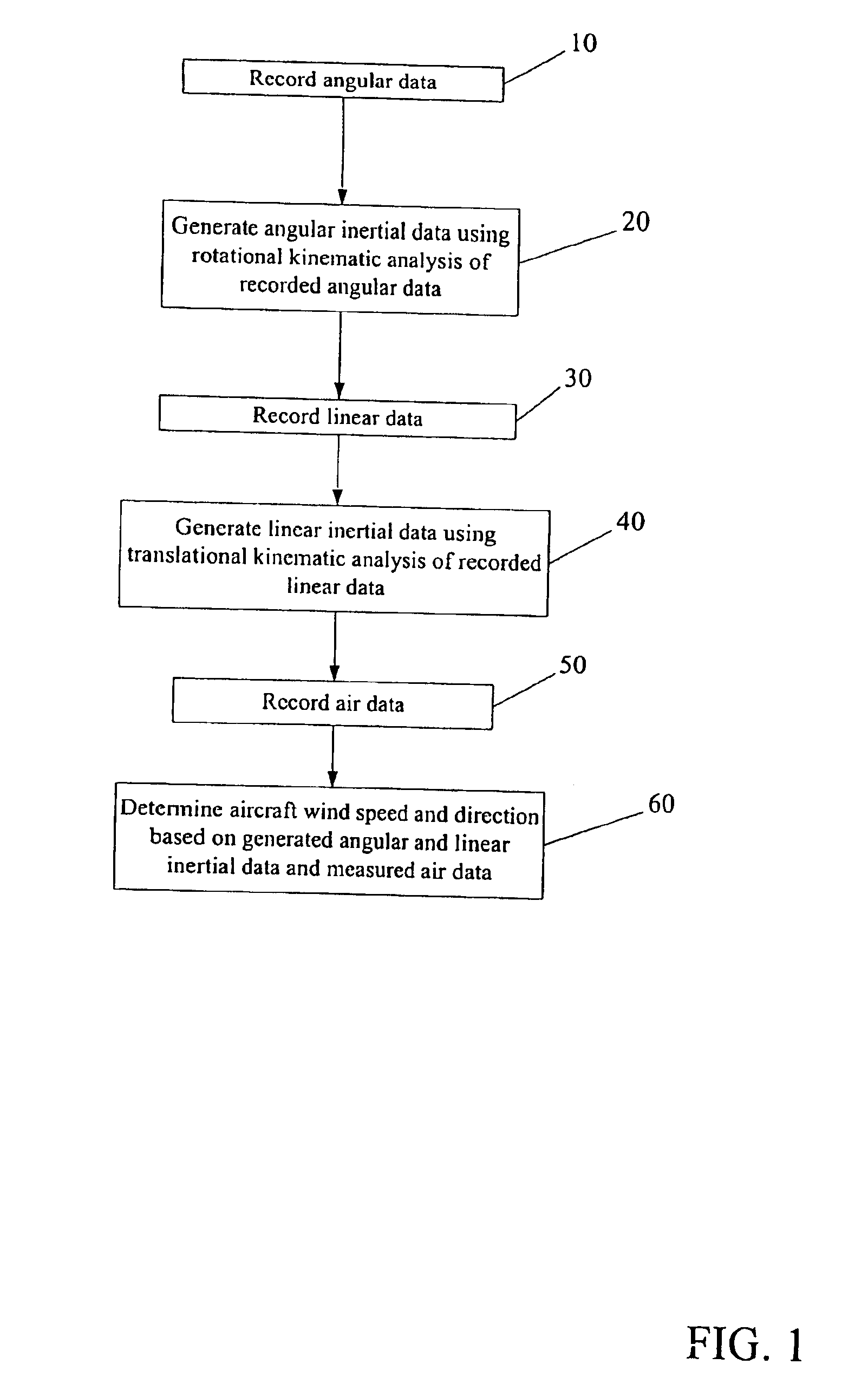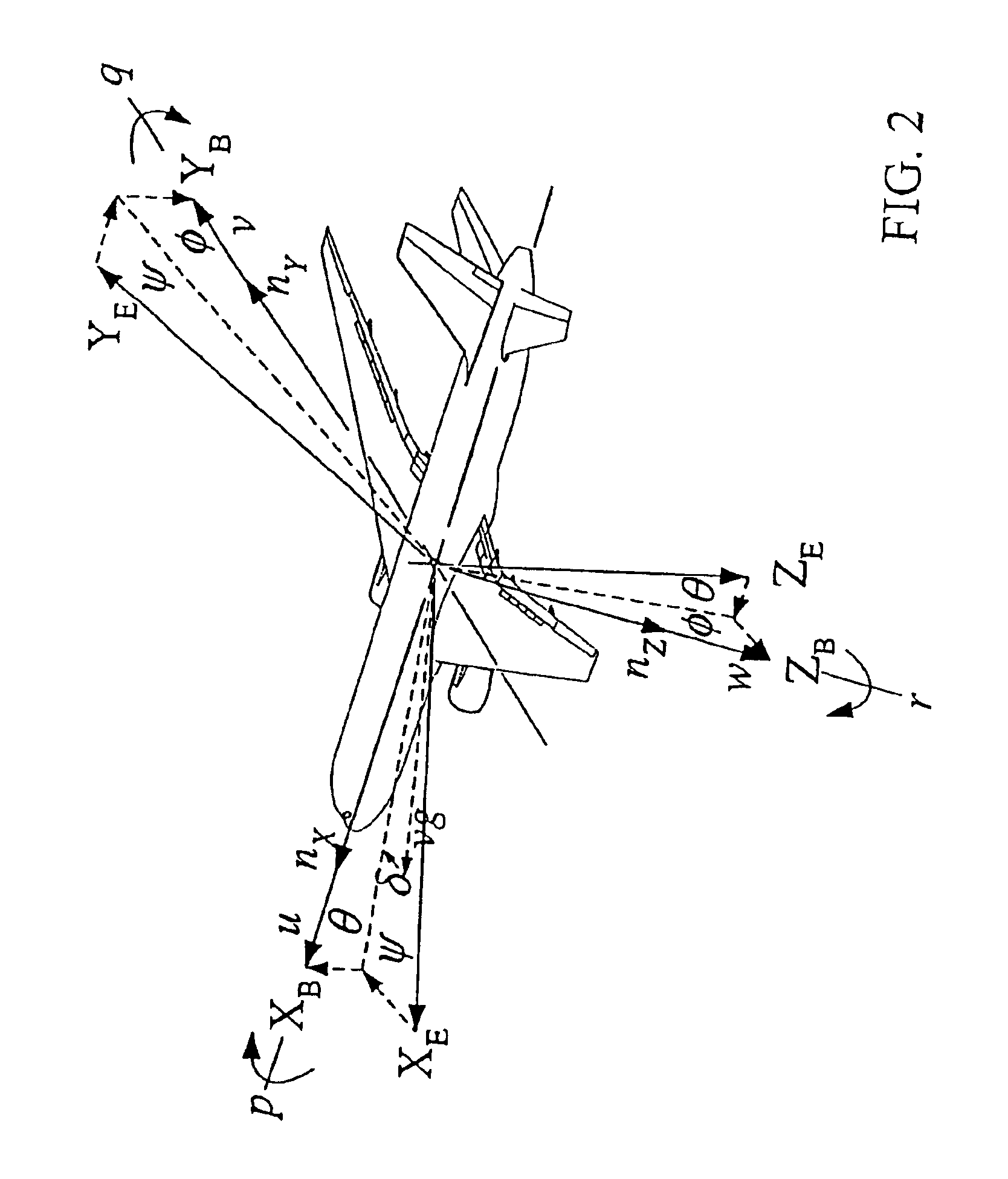System and method for kinematic consistency processing
a kinematic consistency and flight data technology, applied in process and machine control, instruments, navigation instruments, etc., can solve the problems of generating errors, introducing artificial oscillations not present in original data, and spiking data at angular rates, so as to improve accuracy and reliability of corrected flight data and increase analytical results confiden
- Summary
- Abstract
- Description
- Claims
- Application Information
AI Technical Summary
Benefits of technology
Problems solved by technology
Method used
Image
Examples
Embodiment Construction
[0027]The present invention provides a system and method for processing flight test and Flight Data Recorder (FDR) data to ensure that measured aircraft position, speed and acceleration (or load factors) data are kinematically consistent and compatible. In a preferred embodiment, the present invention initially performs a rotational kinematic analysis to determine the kinematically consistent angular rates and acceleration, as well as more accurate Euler angles associated with an aircraft's rotational movement. Using the results of the rotational kinematic consistency analysis, a translational kinematic consistency analysis is performed. This produces kinematically consistent load factors and inertia! speed associated with the aircraft's translational movement, as well as more accurate altitude, ground speed and drift angle data. The inertial data generated from these two analyses are combined with recorded air data to calculate wind speed and direction.
[0028]An overview of the meth...
PUM
 Login to View More
Login to View More Abstract
Description
Claims
Application Information
 Login to View More
Login to View More - R&D
- Intellectual Property
- Life Sciences
- Materials
- Tech Scout
- Unparalleled Data Quality
- Higher Quality Content
- 60% Fewer Hallucinations
Browse by: Latest US Patents, China's latest patents, Technical Efficacy Thesaurus, Application Domain, Technology Topic, Popular Technical Reports.
© 2025 PatSnap. All rights reserved.Legal|Privacy policy|Modern Slavery Act Transparency Statement|Sitemap|About US| Contact US: help@patsnap.com



